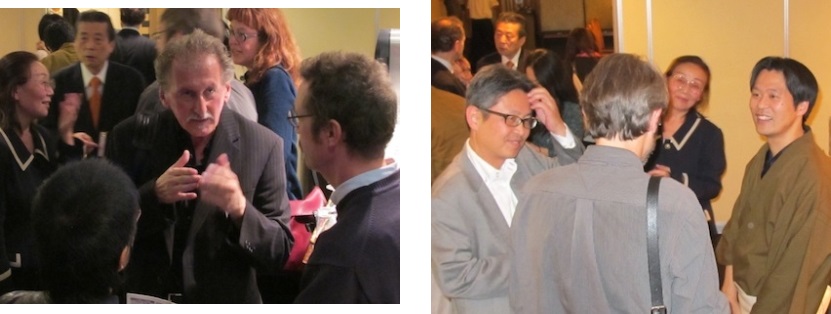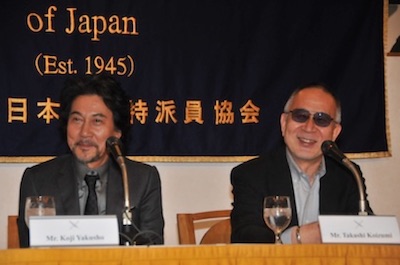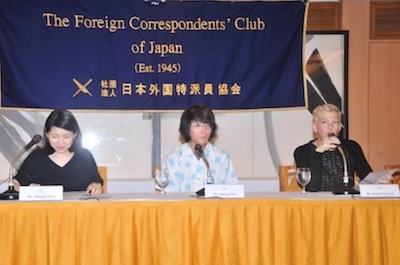Café Elektric with piano and benshi accompaniment
FCCJ helped kick off the Silent Film Renaissance 2014 from Vienna: Treasures of Filmarchiv Austria series, running from November 11 – 16 at the National Film Center in Kyobashi, with a special screening of Gustav Ucicky’s 1927 film Café Elektric, accompanied by renowned pianist Gerhard Gruber and benshi narrator Ichiro Kataoka.
The Movie and Entertainment Committees cohosted the evening, which began with a cocktail party featuring a selection of Austrian wines. Once upon a time, silent films in Japan had live piano and benshi accompaniment. But unlike other nations, which quickly embraced talkies, Japan continued to feature benshi — the era’s real stars — even when it meant turning down the film’s own soundtrack. Not content to merely narrate the story and act out characters’ dialogue, many benshi became famous for providing their own unique interpretations of the action taking place on the screen.

Gruber (middle left) talks with new FCCJ fans, while Kataoka (right)
and NFC Director Hisashi Okajima chat with an overseas visitor.



